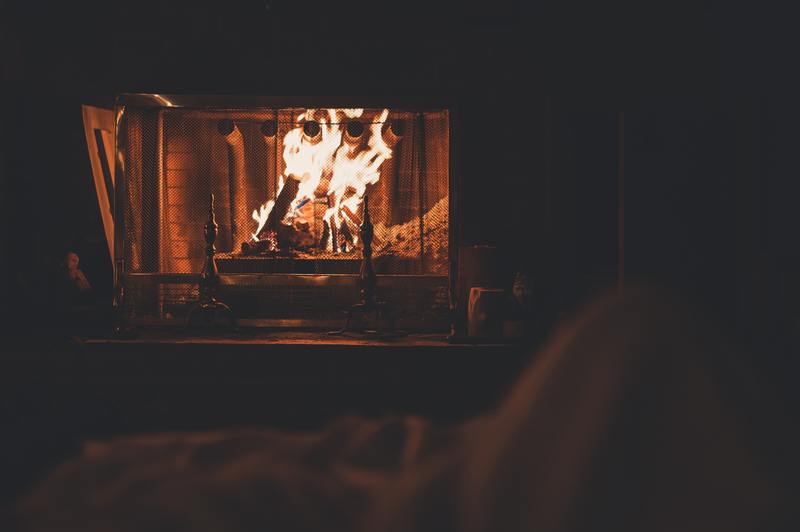Are you wondering about how to remove mildew from fireplaces? Read this article, and you might have an idea of how you can remove them.
To clean the mildew off the fireplace, you need to dilute bleach to water and spray it on the affected area.

The fireplace is one part of our house that is often left unchecked and uncleaned. The fireplace can be a breeding ground for mold and mildew without proper care.
To find where and how the mildew and mold get there, call a certified chimney sweep, and the sweep will help you take necessary actions.
To know more about how to remove mildew from your fireplace, continue reading this article.
What Causes Mildew On Your Fireplace?
Your fireplace is vulnerable to water damage, and for mildew and mold to grow, they need a small amount of moisture and the right environment to produce. With these factors, they will be growing in no time.
If your chimney has a failure, has a broken crown, has a non-waterproof brick and mortar, and has poor ventilation, aside from water damage, then it is most likely that mold and mildew will grow on your fireplace.
The best indicator that mildew is growing is the smell. Mildew has a unique pungy smell that is hard to miss.
Here is what does mildew smell like and how fast does mildew grow for your guidance.
What Is The Difference Between Mildew And Mold?
The difference between mildew and mold is their color. Mildew and mold also differ in texture.
Mildew is more powdery-like, while a mold is fuzzy-like. They also differ in how they affect the surface they grow on.
Mildew only grows on the surface, while mold can penetrate the surface they have affected.
How To Get Mildew Off Your Fireplace
Before continuing with these steps, ensure that you have proper protective gears not to inhale any mildew spores that are dangerous to your health.
Step #1. Dilute bleach to water
This step starts by diluting a ⅛ to ¼ cup of regular household bleach to a quarter of water in a pail.
Once the mixture is ready, try to locate the affected mildew area. Make sure that the affected area is within your reach.
After locating it, pour the bleach mixture into the spray bottle.
Step #2. Spray the affected area
Now that you have located the area affected by mildew, directly spray the mixture to the affected area. Ensure to spray only on the affected area and get it all soaked and saturated.
After spraying the affected area with the mixture, let it sit there for at least three minutes (or longer if you want).
Step #3. Scrub the area
After letting the solution for a while, get a stiff plastic brush. You can use a brush with a long handle if needed.
Ensure to scrub the affected area sufficiently to remove the mildew spores living inside your chimney.
Step #4. Rinse your chimney
For this step, get clean water and rinse off your fireplace. Make sure that the affected area is properly rinsed off.
You can use a bucket or a hose, whatever you find suitable. While at this step, take this tie to also clean and inspect your chimney for preventive measures.
Step #5. Inspect your chimney
Now carefully inspect your chimney to see if there is any mildew left. If there is any left, kindly repeat steps 1-4.
When inspecting the fireplace, be on the lookout for any damage your chimney has acquired or water damage. If there is damage, fix all the problems immediately to avoid mildew from growing at your fireplace again.
How Can You Prevent Mildew from Growing On Your Fireplace
To prevent mildew from growing in your fireplace, you have to make sure to fix all possible leaks on your chimney. Because if there is no moisture, mold or mildew cannot grow.
Ensure that there is no damage to your chimney. Once ensured, you can waterproof your chimney to prevent mildew from growing.
Waterproofing a damaged chimney has no use, and water can still seep through it.
Have a regular inspection of your chimney. This will help you identify possible leaks that will dampen your chimney and let mildew grow on it.
Health Risks Of Mildew
When talking about the health risks of mildew, they usually differ from one person to another based on how robust their immune system is.
Mildew and mold cause allergy-like symptoms that may significantly impair an individual’s respiratory health.
Extended exposure to mildew can lead to more severe health complications. Those with respiratory problems before mildew exposure can also be severely affected by mildew spores.
Due to mildew’s light to severe complications, it is best to get rid of it the first symptom it appears inside your home.
Conclusion
Now that you have read throughout the article, you have learned how to remove mildew from fireplaces. We are hopeful that this article has served you with knowledge on removing mildew from the fireplace.
